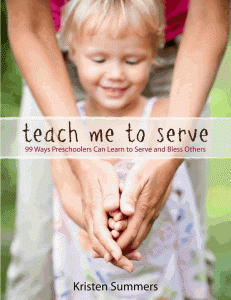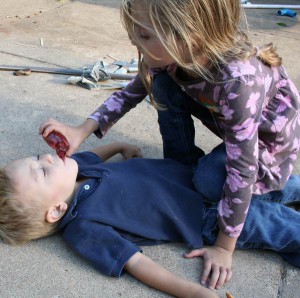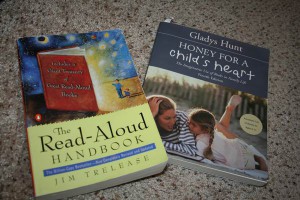If I could go back 8 years to when my son was in 1st grade (or 10 years to when he was in pre-school) this is what I would tell myself. I’d be very blunt and that’s okay because it’s myself.
Stop doing school.
Just stop. Put away your schedules and Charlotte Mason books and Sonlight book lists and CC Scope & Sequence and dreams and goals and pressures and worries. Stop doing school.
Focus on heart attitude and obedience first. We will get to school in a few weeks. Or months. But we need to get some things in order first.
Your children need to obey you and they are not. If you ask them to go sit in a chair, they argue and complain or throw fits. Work on that. Get them to sit in a chair when you ask. Or for the toddler, get him to stay in a pack and play when you tell him and not climb out. Here’s a great talk about that.
Now, at this point I know you are getting worried, younger self. You are thinking maybe this is too harsh, maybe you can distract or cajole them into doing what you want. Why do they need to sit in a chair anyway? Can’t you just make this work? In fact, couldn’t we just take everyone to the park and ignore this whole thing?
No.
I’ll tell you why. The chair isn’t the issue. Obedience is the larger issue. Respect is the larger issue. Who is the one in charge of the home is the issue.
If your children don’t obey you, you will spend the next 5, 10 years in constant battles. You will not be able to enjoy them. They will be discouraged that they are constantly in trouble and you are constantly mad at them. There will be very little joy. You will be exhausted that no one listens to you. You will know they are brilliantly smart and so frustrated that school takes forever. You will feel like they are in control of the house but you won’t know what to do about it.
So focusing on requiring them to obey isn’t mean. I know all the stuff you read in parenting magazines, and our American culture really makes it feel mean and to let the kids decide everything but that doesn’t end well. That ends with spoiled, rather obnoxious children. It ends in you exhausted from their demands and them moody when they don’t get their own way. It ends in depressed teenagers. So even though this seems like a small issue, getting them to sit in a chair, it isn’t. It’s the foundation.
Also, the Bible says for children to obey their parents. God is very clear. So, go back, younger self, and do a Bible study on Proverbs. Who is in charge, the parents or the children? Who is teaching? Who is listening? Who is called wise, the parents or the child? Who is in charge?
Copy Ephesians 6:1, Deuteronomy 6:7 and 11:19. Who’s to teach? (And if your children aren’t listening to you and respecting you, and they’re NOT, which is why you’re frustrated all the time, then you can’t teach them, can you?)
Good. Now copy Hebrews 12:11. Is discipline fun? Is it fun for you, my dear younger self? No, it is not. But you know what’s really not fun? Stressful dinners for 10 years because no one listens to you. Conflict with your child so that your relationship is fraught with anger, tears, hurt feelings. It is so much better to deal with these little weeds before they choke out your garden.
So, this is a huge deal. Yes, the world says all these academic, social, things are critical. You are worried you will be behind.
You are worried you’ll be mean. You don’t have to be mean. You can be loving, gentle and sweet. You don’t need to yell. It doesn’t have to be a fight. You just need to get your child to sit in that chair and you need to win that battle. (Maybe do it when Dad’s home. Maybe have a friend pray for you that day. Maybe get some extra chocolate.)
Start with one minute. They are not in trouble. They just need to sit in a chair because Mom says. Then praise them and go on with something fun and enjoyable. Repeat 5 times that day. Then increase the time the next day to 2 minutes. Nothing fun happens if they don’t do this. No park, no reading, no free time. Just work on this, praise, and build for a week or so. Get to 5 minutes in a chair just one time a day without them climbing out. (* HOW did I actually do this? See the end of this article.)
Before you start this, listen to these talks about: First Time Obedience, and limiting choices (the funnel). And these talks for toddlers, preschoolers, and older kids (Understanding Freedoms part 1 and part 2).
(These talks are extremely helpful. And yes, I know it makes you a little nervous because these Mom’s Notes Talks are based on Growing Kids God’s Way. I know you don’t agree with their baby feeding advice. But just listen for the practical wisdom here. The Links are very balanced. They have the experience of hundreds, maybe thousands, of families. You don’t have to be legalistic. They have lots of practical advice. Listen to them! It’s like a Christian Supernanny. Use what God prompts you to use. Walk in the Spirit. Pray. These talks have so much wisdom in these practical areas. And they know what to do with middle year kids and teenagers too! Finally, someone does!)
Okay, now your child will sit in a chair when you tell them to! This is huge! This is foundational! This is great! Celebrate!
The next thing, younger self, is plan on a training time with your children first thing after breakfast. You can work on a few things: obedience (yes, Mom), patience (sitting and listening to something for a couple minutes, stretching this out), self control (sit time again). For toddlers you can work on blanket time or coming when they call you. Or whatever other issues you see.
(And don’t feel badly that they have to play alone for 20 minutes maybe twice a day. They are surrounded by loving family the rest of the time. It’s okay for them to have a little alone time and learn to be content with that. You’ll be amazed at the imaginative play they come up with.)
Just set aside some time to be proactive with your teaching. Instead of reacting to misbehavior, start using this time in the mornings to teach and train. You can teach a Bible verse and then a practical skill to help them. You can ask them to do a chore and use this as a training time in obeying cheerfully, giving them another if they complain. You can play the Yes, Mom game.
Okay, so now after a few weeks your children should be obeying better.
Oh, and limit their choices during this time. In fact, give them almost no choices.
Because they pretty much think they are in charge of everything. And in case this seems like just mean Christian fundamentalism, read this book, Bringing Up Bebe. In France they call this the ‘cadre’ or the frame. And they say “It’s me who decides.” The parents have a tight frame, structure and control over their children’s day. They proactively train their children in waiting patiently, in being respectful and polite and in developing a taste for healthy foods. It reminded me of how parenting was in the U.S. in the 50s. Or what I know of it from Mrs. PiggleWiggle books.
So, since you like curriculum so much, younger self, think of this as a curriculum for the preschool and kindergarten years. Here’s what you’re teaching and training them in
- · Obeying cheerfully, quickly, and completely (you know, most of the time)
- · Waiting patiently, not interrupting, not demanding attention by climbing on your head
- · Ability to play by themselves (blanket time and pack and play time)
- · Self-control, the ability to sit still and listen (sit time) – this will reap huge benefits in read aloud time, on airplanes and at stores.
- · Contentment with what Mom chooses: food, activities, clothes, etc.
And academic work and chores are a tool to teach them these skills. I don’t even want to call them character qualities. I mean, they are, but they are also skills that can be learned and practiced. Starting small and building up from small successes.
So yes, with your toddler, start with one minute of sitting with his hands in his lap, on mom’s lap, not squirming to get out. I know it seems mean. But oh, the dividends it will pay! The few minutes of training pays off on a plane ride. In the grocery store cart. When he has to sit in a class with you because someone’s late. On and on. I know you don’t see it now. But I’m telling you from the other side, do it!
And the benefits are amazing. Not just to you, for whom of course this makes life, school, your home easier and more peaceful.
But this is also amazingly beneficial and comforting for your children.
They will be happier when they don’t feel like Mom is mad and frustrated at them all the time.
They will be happier kids because they don’t expect to get their way in everything. They will have learned, because you will have taught them, how to be content.
You will not be afraid to go places with them because you never know what they will do. You will be able to minister to people because you know your child will not be out of control.
It truly does bring a harvest of righteousness and peace.
So, stop reading all those homeschool books, my dear younger self. Put down the parenting magazines. Read these two books: for younger kids and this one for older kids. Get the French book from the library (it’s really fun and entertaining too). Listen to these MP3s and then these when you work out at the Y instead of watching HGTV. (I mean, you can still watch the video while you listen to the MP3 if you want. Or you can watch HGTV after each MP3 as a treat.) And dig into what the Bible says about parenting in Proverbs. And I know you didn’t have podcasts back then but if you did, this one is really good.
Pray God would help you obey, even if it feels risky. Even if it feels counter-cultural. Even if it feels hard. Even if you’re worried you’ll ruin your relationship with your child. You won’t. You’ll strengthen it, because they will listen to what you want to teach them. You can be gentle and kind and loving (2 Tim 2:24). But be firm. Require respect and kindness in your home. Require obedience in your home.
You don’t have to spank to do this. It’s okay for some people, and it’s certainly an option, younger self, but since God has led you to use mostly other methods of discipline, that’s okay. You may have to spank a handful of times when you are training them to stay in the chair or pack and play, but that’s it. It won’t be as bad as you fear. Once they get the basic idea, the chair will become the discipline, or consequences, or loss of freedom. You won’t be spanking much at all.
(In fact, I’ll whisper to you, younger self, you only had to spank your middle children less than 10 times in their lives. And most of those were training to sit in the chair (or stay in the pack and play). After that, you used sitting time as the consequence, or losing something, or an extra chore, as the consequence. So, you can be very firm and require these things without using much spanking at all.)
Now, you can start to structure your day because they actually obey. Before, you could come up with any schedule you liked, but it never worked because everyone argued with you about everything.
But also, once you have some of these things going, don’t be afraid to pause.
Even if you had other plans that day. Just pause.
If your child isn’t doing school with a good attitude, ask him to just go sit in the chair until he’s ready to obey with a good attitude. It might take 4 hours the first time. And 30 minutes the second time. And 5 minutes the third time. They learn really fast.
But don’t go on. That’s what I want you to hear. Don’t press ahead, getting madder and madder.
If they roll their eyes, have them sit.
If they argue or whine, have them sit.
If they complain about why they have to do it and brother doesn’t, have them sit.
Maybe give them a warning the first time, but after that, just kindly ask them to go sit until they are ready to work cheerfully.
Same if you’re out. Pull the car over. If the kids are arguing and screaming, pull the car over, quietly talk to them, and work it out.
And if you’re thinking, we’d never get anywhere, they’re always yelling and screaming, well you may need to stay home a few weeks. You may need to train them in not yelling at each other at home. You may need to do a few trips around the block as practice. You may need to plan a trip to the park, fully intending to go back home when they start yelling, calm down, apologize and play nicely. Then try again. (This is not a day to plan to meet friends. This is a training day.)
You don’t need to put up with this. They can learn not to scream at each other, demand the things they want on the CDs, and act silly to get out of things. They can act nicely at dinner.
Stop putting up with it.
It can be different.
With God’s grace and kind, firm teaching and training, it can be different.
And also, I’d tell myself, it’s not too late for the oldest. It’s not too late at 9 years old. Or 12. Or 14.
These talks on understanding freedoms will help. (The most helpful things were: responsibility + good attitude = freedom. My son earns the right to stay up late or go to a friend’s house when he’s responsible in what his Dad or I have given him with a good attitude. Not before.)
That’s what I’d tell my younger mama self. She might or might not have listened. But I think she might have, because she really was at a loss in the discipline area for a looong time and people don’t want to tell you what to do. She wanted someone to tell her what to do, with helpful practical information that worked.
I’m so thankful for the resources God has brought my way. I’m thankful for the wisdom of older women. I’m thankful my relationship with my older children is better now after so many rocky years. My oldest especially seemed, oddly enough, to really thrive when I really required respect and kindness in our home instead of letting things go and constantly reminding him.
And with my toddler, I’m spending way more time proactively training him in all kinds of things: Yes, Mommy game and practice, Blanket Time, Pack and Play time, Sit time (on my lap), how to interrupt politely, how to like healthy foods, No Touch, etc.
But I’m spending way less time frustrated and exhausted with a demanding toddler. Don’t get me wrong, it’s not easy! It’s so much work!!! Taking the time to correct yelling instead of ignoring. Taking time to practice the right behavior instead of just going on. Taking time to correct him if he gets off his blanket during Blanket Time. But as a result, he is a sweet, relatively obedient child.
And he’s so happy! He’s content on an 8-hour plane ride. He makes friends everywhere. He can sit on my lap for 30 minutes during brother’s co-op class. He can be in the room listening to Trumpet of the Swan (for very short periods, like 5 minutes, but we’re working on it!) or just be around us more because he’s not a constant disruption.
And my third-grader actually obeys, praise the Lord! (You know, most of the time.) He gets his school done so we can actually have read aloud time and nature walks and art and play soccer. We can have days with truth and beauty because the foundation is pretty solid. The fun things can happen because of the work on obedience on the front end.
So, the time you put in is worth it, Moms. It’s hard, but when you’re being proactive instead of reactive, it’s not so exhausting somehow.
I pray this was helpful and you’d benefit from some of my many and varied mistakes. Blessings on you and your sweet children.
EDITED TO ADD: So HOW did I actually train them to sit? With my 4th, I was terrified about an upcoming trip to Kenya and we had just been camping and this child would not sit still and I was exhausted, so I really focused on it for about two weeks. I sat him down in his tiny wooden chair and told him we were going to practice “sit time.” I wanted him to sit in the chair and not get up until Mommy’s timer (my watch) beeped. I sat next to him on the floor. I gave him a book that had an audio CD with it so he could listen to the CD and turn the pages of the book. (But any CD or book would probably work. I thought this video was helpful for the concept, even though I used a chair instead of my lap.)
We started with 30 seconds. When he stood up, I’d say, “Oh, no, no, sit until Mommy’s timer beeps.” and I’d gently push on his shoulders to help him sit. And I’d say, “Let’s try again.” or “I’m going to start the timer over.” Not mad of course, just in a happy relaxed tone, and with the attitude we’d keep practicing until we got it. So the first time we had to keep resetting the timer to even get to 30 seconds! So it took maybe 10 minutes. But when he did sit for 30 seconds, I really praised him, told him what a good job he did, clapped and celebrated, then went off to play or do something else.
I also kept a little chart on a piece of notebook paper that showed me progress because it was mind-numbingly slow! And pretty boring for me to have to keep sitting by him and working on this multiple times a day.
I started keeping my hand lightly on his legs to gently push down when he’d want to stand and say, “Oh, no, no, sit until the timer beeps. This is sit time.”
After a day or two he could sit for 30 seconds without a reminder. Then we went up to 1 minute. When he could do that successfully we went to two minutes. It felt like it was taking forever, but after two weeks we were up to 7 or 8 minutes, which actually was long enough to be really helpful at times when I needed him to sit.
And it truly was a great help on the plane ride (and in 2 hour Kenyan church services), because he was used to the concept of “sit time” and I’d just remind him when he wanted to stand up and jump around that this was sit time. So it didn’t seem to matter that it was hours instead of minutes, it was the idea that he had to sit until Mom said time was over that was helpful.
Some people continue using “sit time” daily, but since we do Blanket Time and Pack and Play time (with toys and a CD), I don’t have this as part of our daily schedule. But I am transitioning to this as a consequence. Instead of putting him in the pack and play if he scribbles on a book (on purpose) or screams at or hits his brother or something, I’m having him sit in the kitchen (or wherever I am) with his back to the wall and put his hands together for 1-2 minutes until he “has self-control,” then we talk, he says he’s sorry to brother, we pray, and he can get up.
Also, for my others, they did go through a few days where they were just defiant about sitting where I told them. I mean, after they’d had plenty of practice and clearly knew they weren’t supposed to. That’s where I spanked. One swat. I’d warn them very clearly that if they got out of the pack and play or chair they’d get a spank (one swat). They tested a few times and decided quickly they didn’t want to do that. And with my middle two, that was the only thing I ever spanked them for. (My first one I was generally confused and don’t remember except that I didn’t do it very logically or well.) But once they’d sit, that became the consequence I’d use. Plus maybe extra chores or something if they needed an additional consequence.
Hope all those details are helpful! ![]()

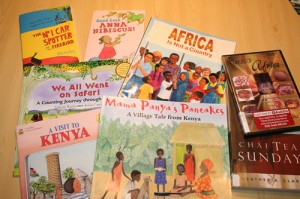
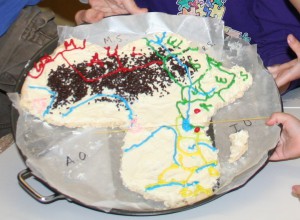
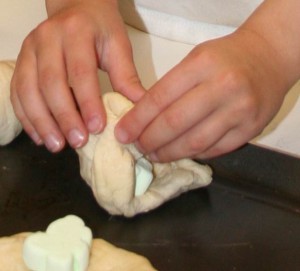






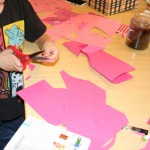

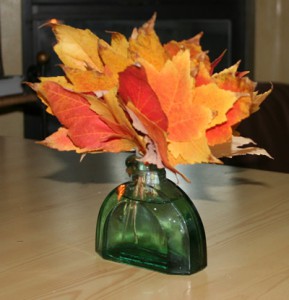
 1. Collect the best leaves you can find, the ones that make your heart skip a beat, as you walk down the street with your children.
1. Collect the best leaves you can find, the ones that make your heart skip a beat, as you walk down the street with your children.





